Related Research Articles

Gentrification is the process of changing the character of a neighborhood through the influx of more affluent residents and businesses. It is a common and controversial topic in urban politics and planning. Gentrification often increases the economic value of a neighborhood, but the resulting demographic displacement may itself become a major social issue. Gentrification often sees a shift in a neighborhood's racial or ethnic composition and average household income as housing and businesses become more expensive and resources that had not been previously accessible are extended and improved.

Mount Pleasant is a neighborhood in the northwestern quadrant of Washington, D.C. It is bounded by Rock Creek Park to the north and west; Harvard Street NW to the south; and 16th Street NW to the east. It is north of Adams Morgan and west of Columbia Heights. It is home to about 10,000 people.

Anthony Allen Williams is an American politician who was the mayor of the District of Columbia, for two terms, from 1999 to 2007. His predecessor had served twice. Williams had previously served as chief financial officer for the district, managing to balance the budget and achieve a surplus within two years of appointment. He held a variety of executive posts in cities and states around the country prior to his service in the D.C. government. Since 2012, he has served as chief executive officer/executive director of the Federal City Council. His tenure as mayor has been appraised very highly by the policy community and historians, with MSNBC branding him "one of the best and most successful mayors in US history."

Shaw is a neighborhood of Washington, D.C., located in the Northwest quadrant. Shaw is a major entertainment and retail hub, and much of the neighborhood is designated as a historic district, including the smaller Blagden Alley-Naylor Court Historic District. Shaw and the U Street Corridor have historically have been the city's hub for African-American social, cultural, and economic life.
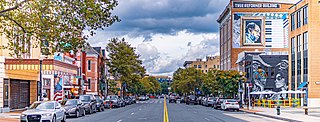
The U Street Corridor, sometimes called Cardozo/Shaw or Cardozo, is a commercial and residential district in Northwest Washington, D.C., most of which also constitutes the Greater U Street Historic District. It is centered along a nine-block stretch of U Street from 9th to 18th Streets, which from the 1920s until the 1960s was the city's black entertainment hub, called "Black Broadway" and "the heart of black culture in Washington, D.C.". After a period of decline following the 1968 riots, the economy picked up with the 1991 opening of the U Street Metro station. Subsequent gentrification diversified the population, which is 67% non-Hispanic White and 18% African American. Since 2013, thousands of residents have moved into new luxury apartment buildings. U Street is now promoted as a "happening" neighborhood for upscale, "hip", and "eclectic" dining and shopping, its live music and nightlife, as well as one of the most significant African American heritage districts in the country.
The District of Columbia Public Schools (DCPS) is the local public school system for Washington, D.C. It is distinct from the District of Columbia Public Charter Schools (DCPCS), which governs public charter schools in the city.
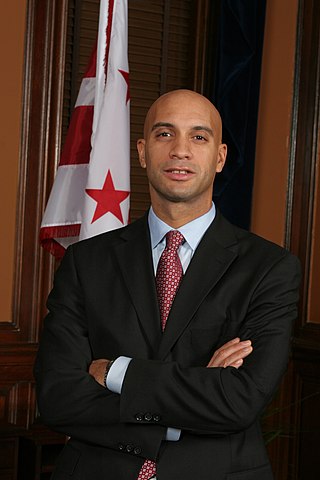
Adrian Malik Fenty is an American politician who served as the mayor of the District of Columbia from 2007 to 2011.

Vincent Condol Gray is an American politician who served as the mayor of the District of Columbia from 2011 to 2015.
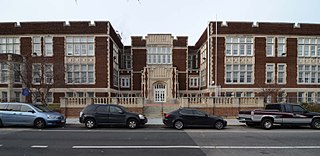
Park View is a neighborhood in central Washington, D.C., immediately north of Howard University.

Muriel Elizabeth Bowser is an American politician who has served as the mayor of the District of Columbia since 2015. A member of the Democratic Party, she previously represented the 4th ward as a member of the Council of the District of Columbia from 2007 to 2015. She is the second female mayor of the District of Columbia after Sharon Pratt, and the first woman to be reelected to that position.
The District of Columbia is a federal district with an ethnically diverse population. In 2020, the District had a population of 689,545 people, with a resident density of 11,515 people per square mile.
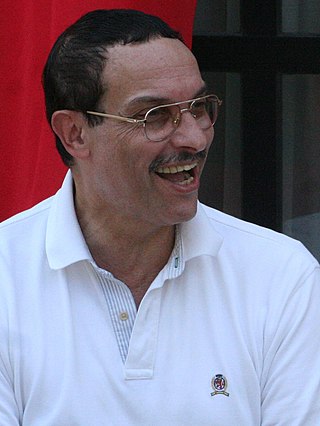
On November 2, 2010, Washington, D.C., held an election for its mayor. The primary elections occurred on September 14. Vincent Gray won the general election by a wide margin, although many voters wrote in incumbent Mayor Adrian Fenty, whom Gray defeated in the primary.

The District of Columbia Department of Parks and Recreation (DPR) is an executive branch agency of the government of the District of Columbia in the United States. The department plans, builds, and maintains publicly owned recreational facilities in District of Columbia, including athletic fields, community centers, parks, playgrounds, swimming pools, spray pools and tennis courts. It also manages publicly run recreational sports leagues for youth and adults as well as provides various outdoor activities for youth, adults, and senior citizens.

The mayor of the District of Columbia is the head of the executive branch of the government of the District of Columbia. The mayor has the duty to enforce district laws, and the power to either approve or veto bills passed by the D.C. Council. In addition, the mayor oversees all district services, public property, police and fire protection, most public agencies, and the district public school system. The mayor's office oversees an annual district budget of $8.8 billion. The mayor's executive office is located in the John A. Wilson Building in Downtown Washington, D.C. The mayor appoints several officers, including the deputy mayors for Education and Planning & Economic Development, the district administrator, the chancellor of the district's public schools, and the department heads of the district agencies.

Gentrification of Atlanta's inner-city neighborhoods began in the 1970s, and it has continued, at varying levels of intensity, into the present. Many factors have contributed to the city's gentrification. A major increase in gentrification that occurred in the last years of the 20th century has been attributed to the 1996 Summer Olympics. However, during the 2000s, Atlanta underwent a profound transformation demographically, physically, and culturally. Suburbanization, rising prices, a booming economy, and new migrants decreased the city’s black percentage from a high of 67% in 1990 to 54% in 2010. From 2000 to 2010, Atlanta gained 22,763 white residents, 5,142 Asian residents, and 3,095 Hispanic residents, while the city’s black population decreased by 31,678. Much of the city’s demographic change during the decade was driven by young, college-educated professionals: from 2000 to 2009, the three-mile radius surrounding Downtown Atlanta gained 9,722 residents aged 25 to 34 holding at least a four-year degree, an increase of 61%. Between the mid-1990s and 2010, stimulated by funding from the HOPE VI program, Atlanta demolished nearly all of its public housing, a total of 17,000 units and about 10% of all housing units in the city. In 2005, the $2.8 billion BeltLine project was adopted, with the stated goals of converting a disused 22-mile freight railroad loop that surrounds the central city into an art-filled multi-use trail and increasing the city’s park space by 40%. Lastly, Atlanta’s cultural offerings expanded during the 2000s: the High Museum of Art doubled in size; the Alliance Theatre won a Tony Award; and numerous art galleries were established on the once-industrial Westside.
LaRuby Zinea May is an American politician and African American lawyer who formerly represented Ward 8 on the Council of the District of Columbia in Washington, D.C. She won the Ward 8 special election on May 10, 2015, succeeding Marion Barry, who died in office on November 23, 2014. May, who was sworn into office on May 14, 2015, served out the remainder of Barry's term, which ended on December 31, 2016. During her first council term, she was active on the issues of crime and violence, marijuana policy, assisted suicide, and improvements to Advisory Neighborhood Commissions. She criticized the city's emergency medical services department, opposed the creation of a public electrical utility, and applauded the construction of a sports arena in her ward. She was one of the few council members to support the mayor during the FreshPAC scandal, and although she asked Congress to end its school voucher program she also supported a political action committee which supports an expanded voucher and charter school program in the District. She is a member of the Democratic Party.
Trayon White is an American Democratic politician, currently serving as a member of the Council of the District of Columbia, representing Ward 8 of the District of Columbia. Before entering politics, he worked as a grassroots organizer and activist in the communities he would later represent on the Council. He won election to the Council in 2016, his second attempt for the seat held by Marion Barry until Marion's death.
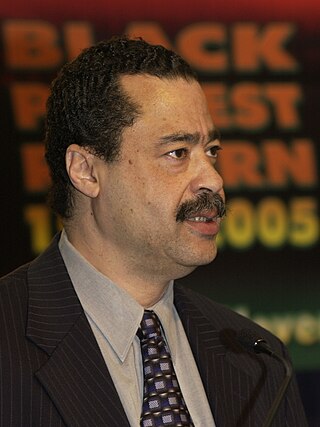
Courtland Milloy is an American columnist and former reporter for The Washington Post. He joined the Post in 1975 after working at the Miami Herald. He is one of the journalists interviewed in the documentary film The Newspaperman. Milloy is known for covering the Washington D.C. area's African American community and highlighting issues in less affluent areas of Washington, D.C. He is a critic of gentrification and urban cyclists. Milloy hosted the BET show For Black Men Only in 1992.
Gentrification in the United States is commonly associated with an influx of higher-income movers into historically divested neighborhoods with existing, working-class residents, often resulting in increases in property prices and investment into new developments. Displacement and gentrification are also linked, with consequences of gentrification including displacement of pre-existing residents and cultural erasure of the historic community. In the United States, discussions surrounding gentrification require critical analysis of race and other demographic data in examining the inequalities and disparities between existing residents, the community, new buyers, and developers caused by gentrification.
Washington, D.C., is a political division coterminous with the District of Columbia, the federal district of the United States. The enactment of the District of Columbia Home Rule Act in 1973 provided for an elected mayor for the first time in nearly a century. Starting in 1974, there have been thirteen elections for mayor and six people have held the office. The Democratic Party has immense political strength in the district. In each of the mayoral elections, the district has solidly voted for the Democratic candidate, with no margin less than 14 percentage points.
References
- 1 2 3 Harry Jaffe, So-called "plan" for white supremacy lives on in D.C., Washington Examiner, August 30, 2010.
- ↑ Jeffrey R. Henig and Wilbur C. Rich, Mayors in the middle: politics, race, and mayoral control of urban schools. Princeton University Press, 2004, pp. 204–207.
- ↑ "Skeptoid: The Plan to Retake Washington".
- ↑ "District of Columbia—Race and Hispanic Origin for Selected Cities and Other Places: Earliest Census to 1990". U.S. Census Bureau. Archived from the original on August 12, 2012. Retrieved April 21, 2012.
- ↑ "QuickFacts: District of Columbia". U.S. Census Bureau. July 1, 2017. Retrieved October 11, 2018.
- ↑ Mikaela Lefrak, "Conspiracy theories: Bad for democracy but good for a politician turned novelist", Washington Post Magazine, Feb. 10, 2019, pp. 4-6.
- ↑ Isabelle Anguelovski, "", BCNUEJ, Sept. 22, 2019
- ↑ Rend Smith, Pretty Map Answers Ugly Question, Washington CityPaper, Sep. 21, 2010, 6:06 pm.
- 1 2 U.S. Census, "DC" Archived 2012-03-16 at the Wayback Machine 2010 Census Results: District of Columbia.
- ↑ Carol Morello and Dan Keating, Number of black D.C. residents plummets as majority status slips away, The Washington Post, March 24, 2011.
- 1 2 Jonetta Rose Barras, Recruiting Diversity: Michelle Rhee's campaign to diversify DCPS means wooing white parents. Washington CityPaper, August 27, 2010.
- ↑ Erika Niedowski, D.C. Is Continuing to Whiten, WashingtonCityPaper, Jan. 7, 2010.
- ↑ E.g., Comrade Al Gonzales, Comment #10 to D.C. Is Continuing to Whiten, January 8, 2010, at 4:05 pm. Accessed 2010.09.23: "'The Plan' is working. White people are pushing black people out of the District - that's 'The Plan'".
- ↑ US Census: "State & County QuickFacts - District of Columbia" Archived 2011-08-20 at the Wayback Machine retrieved January 27, 2015
- ↑ William Raspberry, "Toward 2028" The Washington Post, February 1, 1998.
- 1 2 Courtland Milloy, "D.C. election didn't just unseat abrasive Mayor Fenty. It was a populist revolt." The Washington Post, September 16, 2010.
- 1 2 Editorial, Adrian Fenty: The Jerk D.C. Needs, Washington CityPaper, September 10, 2010.
- ↑ Ruben Casteneda, "What's The Plan?" Washington City Paper, March 6, 2020, p. 10.
- ↑ Ross, Dax-Devlon (2021-06-15). Letters to My White Male Friends. St. Martin's Publishing Group. ISBN 978-1-250-27684-1.